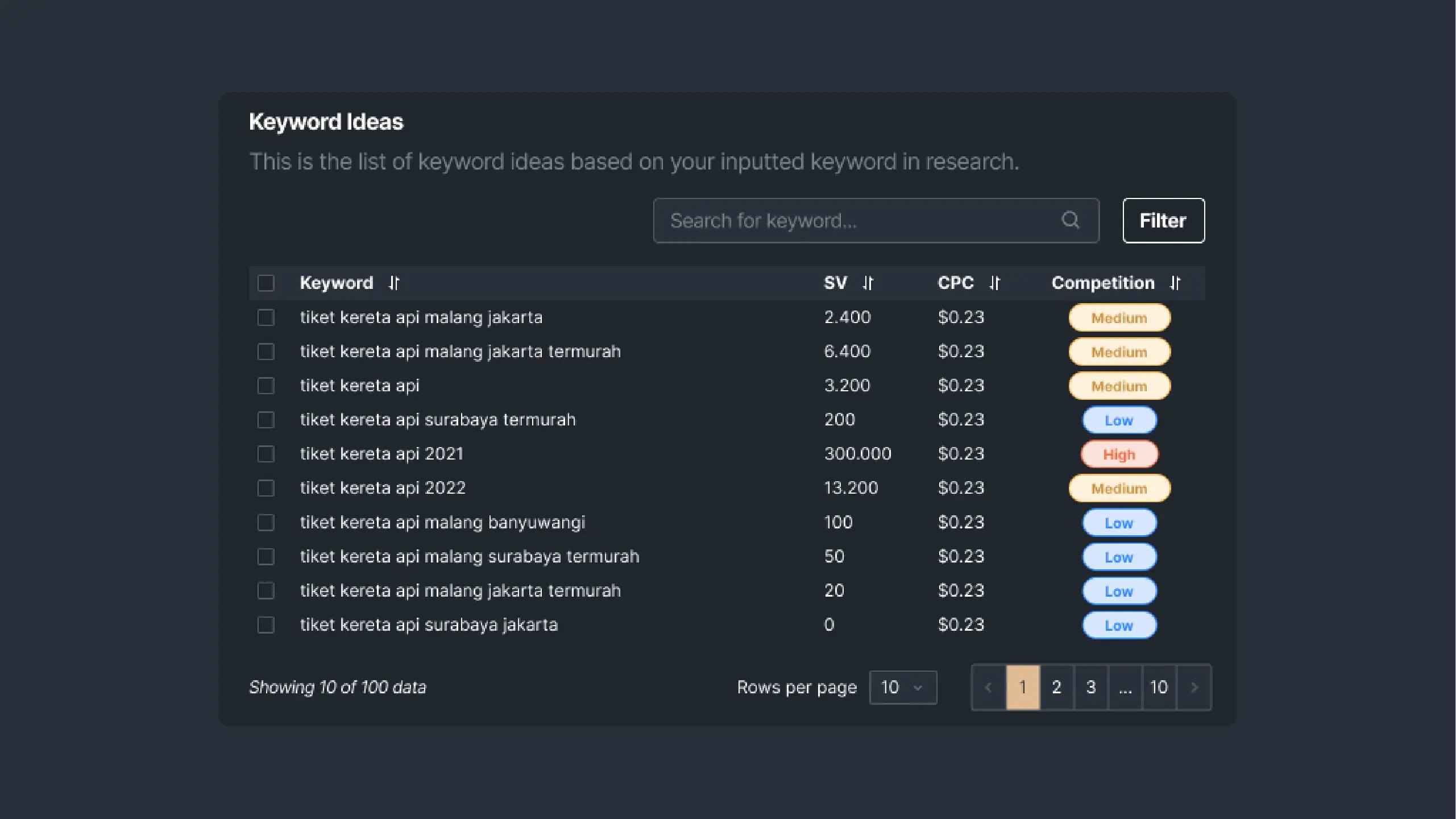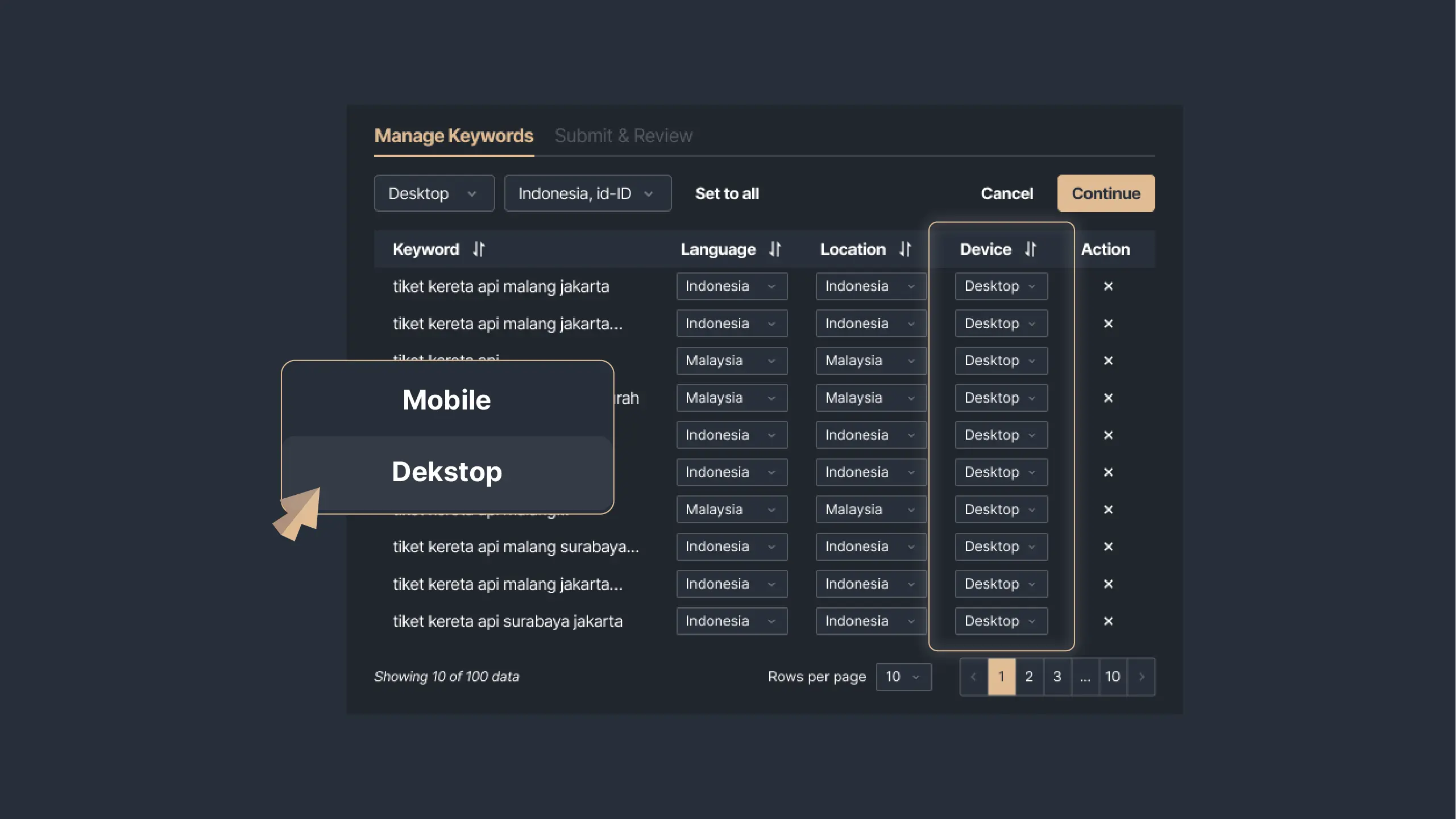The mobile-first approach to SEO is important because it recognizes the growing use of mobile devices as the primary way that people access the internet. That’s why mobile keywords should be differentiated from desktop keywords.
More people are using their smartphones and tablets to browse the web, make purchases, and interact with businesses. As a result, search engines like Google are placing a greater emphasis on mobile-friendly websites and mobile optimization in their search algorithms.
In this article, we will discuss more how to have a mobile-first keyword approach to win the mobile search.
Mobil-First Keyword Approach Definition
The mobile-first approach to SEO is a strategy that focuses on optimizing a website for mobile users. This approach is often used to catch more mobile queries that can be very different from desktop queries.
Mobile keywords in SEO refer to the keywords and phrases that are typically used by mobile users when searching for products, services, or information on the internet. These keywords are often different from those used by desktop users, as mobile users may have different needs and behaviors when searching on a mobile device.
For example, a mobile user searching for "coffee shops near me" is likely looking for a physical location to visit, while a desktop user searching for "best coffee beans" may be looking for an online retailer to purchase from.
Since the two devices have different users behavior regarding keywords, it is important to have a different approach.
How to Find Mobile-Friendly Keywords for SEO Content
As said earlier, mobile and desktop keywords are different. Thus, the way of choosing it will be mobile-centric. Here are some tips on identifying mobile-first keywords for better content performance.
Conduct Mobile Keyword Research
To identify mobile keywords, you can conduct keyword research using tools such as Google's Keyword Planner or Sequence Stats.

Picture 1: Keyword ideas features in Sequence Stats
These tools can provide data on search volume, competition, related keywords for mobile users, and other valuable keyword metrics. In Sequence Stats, finding keywords for the mobile approach is very possible. With the data provided, you can measure whether the keywords are worth tracking.
Additionally, you can also conduct user research to understand the needs and behaviors of your mobile audience by conducting surveys, focus groups, or user testing.
Analyze Search Intent
It is important to understand the intent behind specific search queries to identify mobile keywords that are relevant to your business.
For example, a user searching for "best barbershop near me" is likely looking for a physical location to visit, while a user searching for "barber cut recommendation" seems to look for information or reference.
Look at Location-based Keywords
Mobile users often search for location-based keywords such as "near me" or "in [city name]", indicating that they are looking for a physical location. These keywords can help you to identify local customers and optimize your website for local search.
Then, you can create high-quality content that contains location-based keywords to show that you are the most relevant to their queries.
Utilize Long-tail Keywords
Long-tail keywords, which are longer and more specific phrases, can be more effective for mobile optimization than short, broad keywords. These keywords often indicate a user's specific needs or intent and can help to improve the relevance and quality of your website's content.
Even if the demand is not as high as short-tail keywords, long-tail keywords commonly have less competition. This quality makes your site easier to rank on that keywords.
Consider The Use of Voice Search
As the use of voice assistants such as Google Assistant or Alexa increases, the use of voice search is also increasing. Voice search queries are often in the form of a question and contain conversational language. Optimizing voice search queries can help you to reach mobile users who prefer to use voice search.
You can choose keywords that are widely used in a conversation. By that, the search engine will understand it and suggest your content to the relevant queries.
Optimizing Mobile-Friendly Keywords
Once you have identified mobile-friendly keywords, the next step is to optimize your website for those keywords. This includes creating mobile-friendly content, optimizing your website for mobile devices, and utilizing structured data to improve mobile visibility.
Create Mobile-Friendly Content
Creating mobile-friendly content is essential to optimizing for mobile keywords. This includes ensuring that your website's content is easy to read and navigate on a small screen, using header tags and lists to break up the text, and using images and videos to enhance the user experience.
Not only that, but you should also make sure that your website's loading speed is fast, as slow-loading pages can be a significant turn-off for mobile users. It will need technical support from your team to deal with these metrics.
Build Mobile-Friendly Website
Optimizing your website for mobile devices is crucial to improving mobile visibility. This includes ensuring that your website is responsive, meaning that it adjusts to the size of the screen it is being viewed on.
It also includes making sure that your website's navigation is easy to use on a mobile device and that buttons and links are large enough to be easily tapped. Consult with your visual team and developer team about a mobile-friendly website.
Monitoring Mobile Keywords Performance
Utilizing analytics and tracking tools can provide valuable insights into how mobile users are interacting with your website and how your mobile optimization strategies are impacting your rankings and visibility in mobile search results.
Continuously monitoring and adjusting strategies to maintain and improve mobile visibility is crucial. As search algorithms and mobile user behavior constantly evolve, it is important to stay up-to-date on best practices and adjust your mobile optimization strategies as needed.
This can include updating your website to ensure it is mobile-friendly, creating fresh and engaging content, and monitoring your website's performance in mobile search results to identify opportunities for improvement.
The Tools
One of the key tools for measuring and analyzing mobile-friendly keywords is Google Analytics. This tool can provide information on the number of mobile users visiting your website, the keywords they are using to find your website and the pages they are viewing.
You can also use Google Analytics to track the bounce rate and conversion rate of mobile users, which can provide valuable insights into the effectiveness of your mobile optimization strategies.
Another important tool for measuring and analyzing mobile-friendly keywords is Google Search Console. This tool can provide information on the keywords that are driving traffic to your website, as well as the pages that are ranking in mobile search results.
If you want a more advanced tool, you can use Sequence Stats which is able to track your keywords both for mobile and desktop. So, you can observe the data separately for the mobile keywords performance.

Picture 2: mobile and desktop keywords tracked using Sequence Stats.
You need to track both devices to see the overall performance. It is because a keyword may perform differently depending on the device. By using this tool, you can see the difference.
In addition to utilizing analytics and tracking tools, it is also important to monitor and analyze data to identify opportunities for optimization. This can include analyzing the performance of specific pages or keywords to identify areas for improvement, as well as identifying trends and patterns in mobile search behavior to inform future optimization strategies.
Conclusion
With the increasing number of people accessing the internet through mobile devices, it is essential to use a mobile-friendly keywords approach in your SEO plan. This not only improves the user experience but also helps businesses to stay ahead of the competition and reach a larger audience.
By implementing a mobile-first approach, businesses can ensure that their website is easily accessible and user-friendly for mobile users, ultimately leading to increased traffic and conversion rates.
Not to mention, with the help of SEO tools, businesses will be able to achieve their SEO goals as planned. Besides the SEO tool provided by Google, Sequence Stats will be a suitable tool to track mobile keyword ranking, conduct keyword research, and do many other SEO activities.
You better register and have the Sequence Stats account to enjoy the free trial.